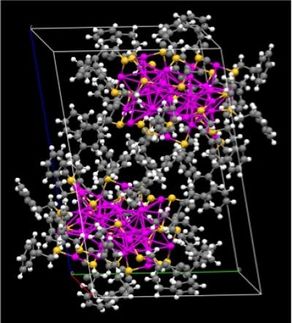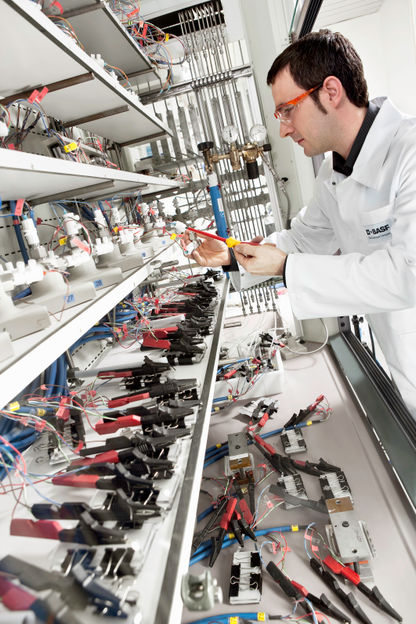New strategy to design mechano-responsive luminescent materials
"Smart" materials that change color in response to a mechanical stimulus have a broad range of applications such as creating pressure-sensitive sensors and packaging that can detect tampering.
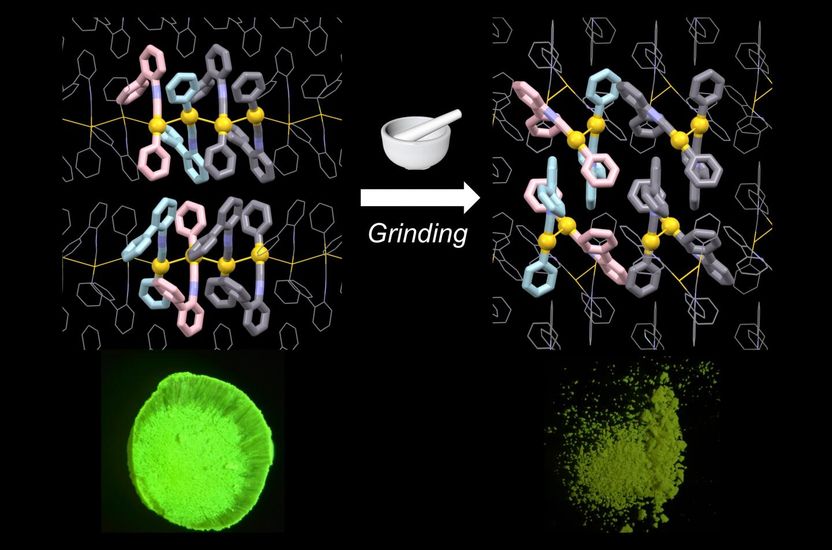
Grinding chiral crystals of gold and isocyanide complexes caused them to transition into achiral crystals while simultaneously changing their emission properties.
Jin M. et al., Journal of the American Chemical Society, May 23, 2017
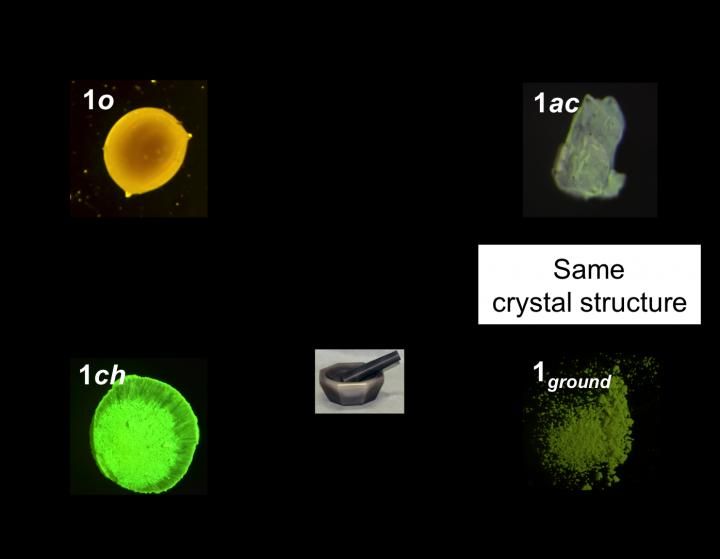
Viscous oil made from gold and isocyanide crystalizes in response to stimuli either into a chiral crystal or achiral crystal. A chiral crystal turns to an achiral crystal when ground. Phase transitions cause color changes.
Jin M. et al., Journal of the American Chemical Society, May 23, 2017
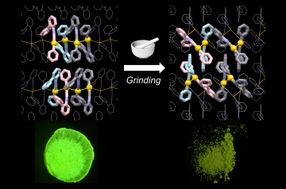
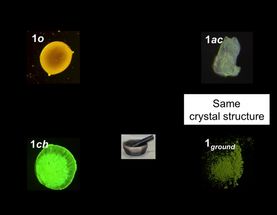
Researchers at Hokkaido University have now designed a novel "mechano-responsive luminescent material" using a gold and isocyanide complex, which includes two bonded rings of carbon and hydrogen atoms.
When the material is first prepared, it is a viscous oil. The oil emits an orange color under ultraviolet irradiation. When the oil is pricked with a needle, however, it randomly crystallizes either into "chiral" yellow crystals that emit green light or into "achiral" whitish-grey crystals that emit bluish-green light.
A crystal is chiral if the molecules are aligned in a way it cannot be superimposed onto its mirror image. This makes your left and right hands chiral, for example, while a soda pop can would be achiral.
The oil also transformed either into chiral or achiral crystals when in contact with small pieces of each crystal respectively. Furthermore, when ultrasonic was applied to the oil for 20 minutes, it turned into a powder of the achiral crystals.
Remarkably, grinding chiral crystals caused them to transition into achiral crystals while simultaneously changing their emission properties. "This is the first proof that the chiral-to-achiral phase transition caused by a mechanical stimulus could alter emission properties," says Hajime Ito, "Achiral crystals are generally more stable than chiral crystals, known as Wallach's Rule. This makes the chiral-to-achiral transition very reasonable."
This is the firt such example of this kind of material, they say, and their results indicate that the dynamic change between the two crystal phases may be a promising strategy to design universal mechano-responsive functional materials. "By targeting molecules that can form both chiral and achiral crystals and follow Wallach's Rule, we might be able to develop mechano-responsible materials more strategically and efficiently," Ito added.
Original publication
Other news from the department science

Get the chemical industry in your inbox
By submitting this form you agree that LUMITOS AG will send you the newsletter(s) selected above by email. Your data will not be passed on to third parties. Your data will be stored and processed in accordance with our data protection regulations. LUMITOS may contact you by email for the purpose of advertising or market and opinion surveys. You can revoke your consent at any time without giving reasons to LUMITOS AG, Ernst-Augustin-Str. 2, 12489 Berlin, Germany or by e-mail at revoke@lumitos.com with effect for the future. In addition, each email contains a link to unsubscribe from the corresponding newsletter.
